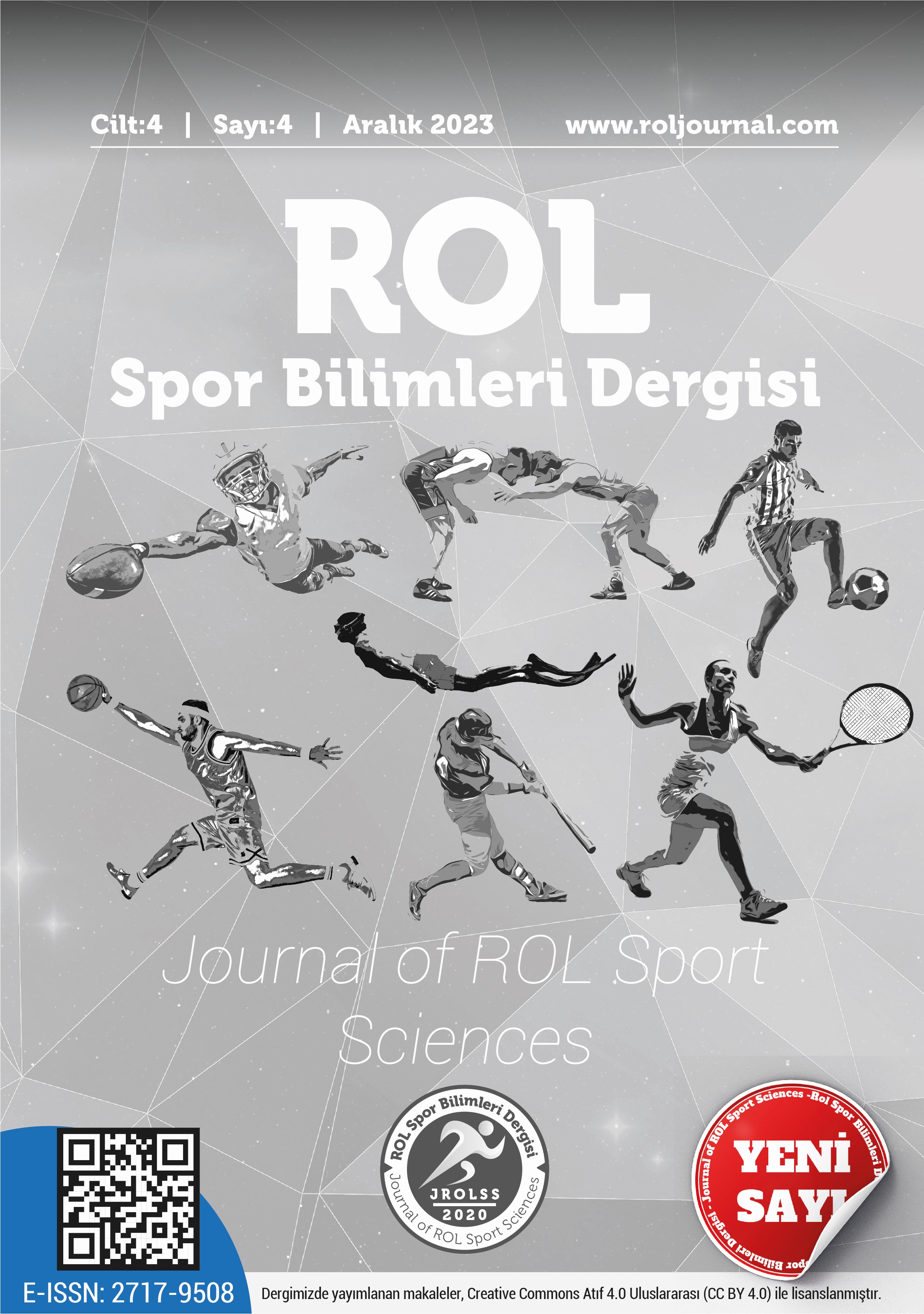The effects of player substitutions on match winning performance in Turkish Super League
DOI:
https://doi.org/10.5281/zenodo.10299056Keywords:
Soccer, match winning, substitutionAbstract
During the soccer game, coaches have to make strategic decisions on player substitutions. Player substitutions made at the right time and with the right player can have a significant impact on winning the competition. The aim of this study is to investigate the effects of player substitutions in Turkish Super League competitions on match winning performance. The sample of the present study was composed of 100 matches randomly selected from the Turkish Professional Soccer League (Super League) during the 2020-2021 season. A total of 766 player substitutions made by the home and away teams in these competitions were analyzed according to the determined parameters. All the data obtained were given and interpreted as frequency and percentage values. As a result of the analyzes carried out, it was determined that the first player substitutions occurred mostly in the half-time and between 46-60 minutes of the competitions. It was found that the second player substitutions occurred mostly between the 61-75 minutes of the games. It has been observed that the third, fourth and fifth substitutions are mostly made between the 76-90 minutes of the matches. As a result, the fact that the coaches make more substitutions, especially between the 61-90 minutes of the matches, can be explained as the result of a strategy they apply to win the match by interfering with the game. In addition, coaches' substitutions time strategies can have an impact on the game tactics applied during the competition and final outcome in the match.
References
Ascari, G., & Gagnepain, P. (2006). Spanish football. Journal of Sports Economics, 7(1), 76-89.
Bradley, P. S., Lago-Peñas, C., & Rey, E. (2014). Evaluation of the match performances of substitution players in elite soccer. International journal of Sports Physiology and Performance, 9(3), 415-24.
Carling, C., Espie, V., Le Gall, F., Bloomfield, J., & Jullien, H. (2010). Work-rate of substitutes in elite soccer: A preliminary study. Journal of Science and Medicine in Sport, 13(2), 253–255.
Celik O. B. (2020). Survival analysis of player substitutions in Turkish Super League, Journal of Yasar University, 15(58), 329-36.
Del Corral, J., Barros, C. P., & Prieto-Rodriguez, J. (2008). The determinants of soccer player substitutions: A survival analysis of the Spanish soccer league. Journal of Sports Economics, 9(2), 160-72.
Doğan, M., Şahin, S., & Doğan, A. (2021). Examination of the sportive performance of Bursaspor professional football team in the TFF first league in the 2020-2021 season. Bozok International Journal of Sport Sciences, 2(2),137-144.
Duarte, R., Araújo, D., Correia, V., Davids, K., Marques, P., & Richardson, M. J. (2013). Competing together: Assessing the dynamics of team–team and player–team synchrony in professional association football. Human Movement Science, 32(4), 555-66.
Frank, S. (2013). The importance of being benched: Soccer, contingency and re-enchantment. Soccer & Society, 14(1), 52-65.
Frick, B., Barros, C. P., & Prinz, J. (2010). Analysing head coach dismissals in the German “Bundesliga” with a mixed logit approach. European Journal of Operational Research, 200(1), 151-59.
Gomez, M. A., Lago-Peñas, C., & Owen, L. A. (2016). The influence of substitutions on elite soccer teams’ performance. International Journal of Performance Analysis in Sport, 16(2), 553-68.
Hills, S. P., Barwood, M. J., Radcliffe, J. N., Cooke, C. B., Kilduff, L. P., Cook, C. J., … et al. (2018). Profiling the responses of soccer substitutes: A review of current literature. Sports Medicine, 48(10), 2255–2269.
Hirotsu, N., & Wright, M. (2002). Using a Markov process model of an association football match to determine the optimal timing of substitution and tactical decisions. Journal of the Operational Research Society, (53), 88-96.
Hirotsu, N., Ito, M., Miyaji, C., Hamano, K., & Taguchi, A. (2006). Modeling tactical changes of formation in association football as a non-zero-sum game. Journal of Quantitative Analysis in Sports, (2), 1-22.
Janković, A., & Leontijević, B. (2006). Substitution of players in function of efficiency increase of tactic play plan in football. Fizička Kultura, 60(2), 165-72.
Liu, H., Hopkins, W., Gómez, A. M., & Molinuevo, S. J. (2013). Inter-operator reliability of live football match statistics from OPTA Sportsdata. International Journal of Performance Analysis in Sport, 13(3), 803-21.
Liu, H., Wang, L., Huang, G., Zhang, H., & Mao, W. (2020). Activity profiles of full-match and substitution players in the 2018 FIFA World Cup. European Journal of Sport Science, 20(5), 599–605.
Lago-Ballesteros, J., Lago-Peñas, C., & Rey, E. (2012). The effect of playing tactics and situational variables on achieving score-box possessions in a Professional soccer team. Journal of Sports Sciences, (30), 1455-1461.
Martínez, M. L., Rein, R., Caparrós, M. G., Memmert, D., & Rey, E. (2022). The effect of substitutions on team tactical behavior in professional soccer, Research Quarterly for Exercise and Sport, 93(2), 301-309.
Myers, B. R. (2012). A proposed decision rule for the timing of soccer substitutions, Journal of Quantitative Analysis in Sports, 8(1), 3-12.
Padron-Cabo, A., Rey, E., Vidal, B., & Garcia-Nunez, J. (2018). Work-rate analysis of substitute players in professional soccer: Analysis of seasonal variations. Journal of Human Kinetics, 65(1), 165–174.
Reilly, T., Drust, B., & Clarke, N. (2008). Muscle fatigue during football match-play. Sports Medicine, 38(5), 357-67.
Rey, E., Lago-Ballesteros, J., & Padron-Cabo, A. (2015). Timing and tactical analysis of player substitutions in the UEFA Champions League. International Journal of Performance Analysis in Sport, 15(3), 840–850.
Downloads
Published
How to Cite
Issue
Section
License
Copyright (c) 2023 Journal of ROL Sport Sciences

This work is licensed under a Creative Commons Attribution 4.0 International License.

